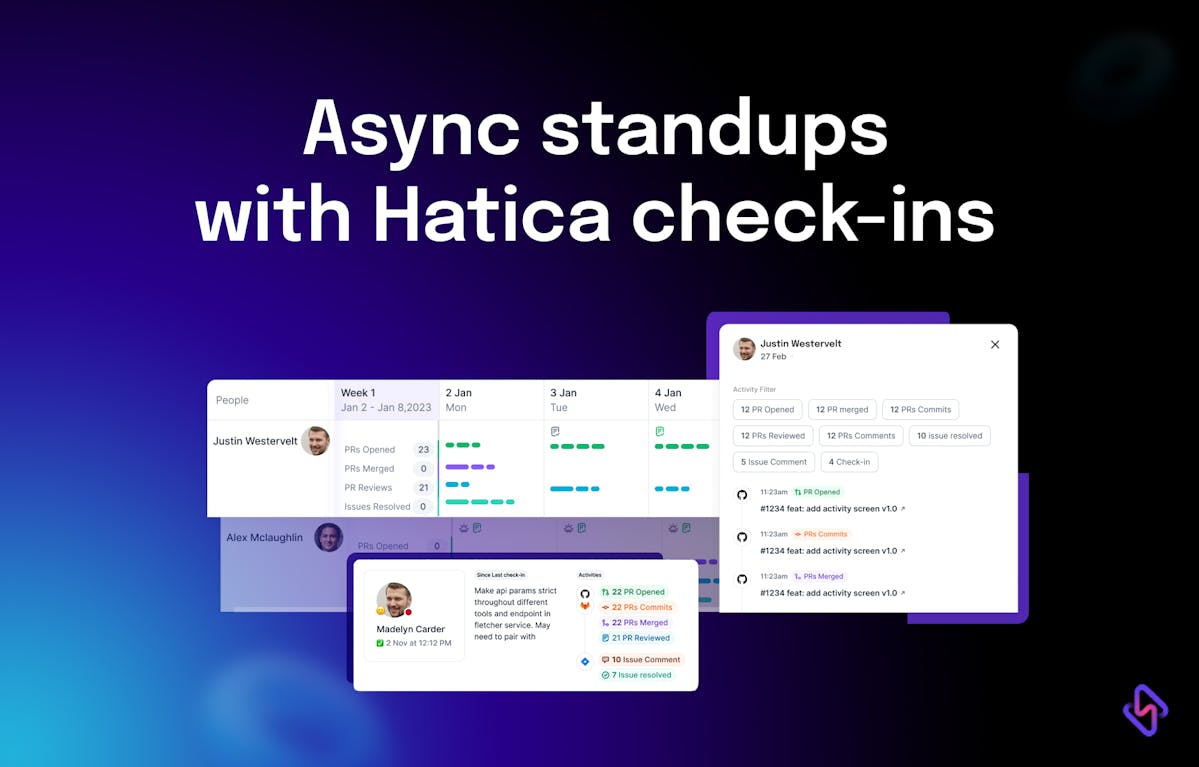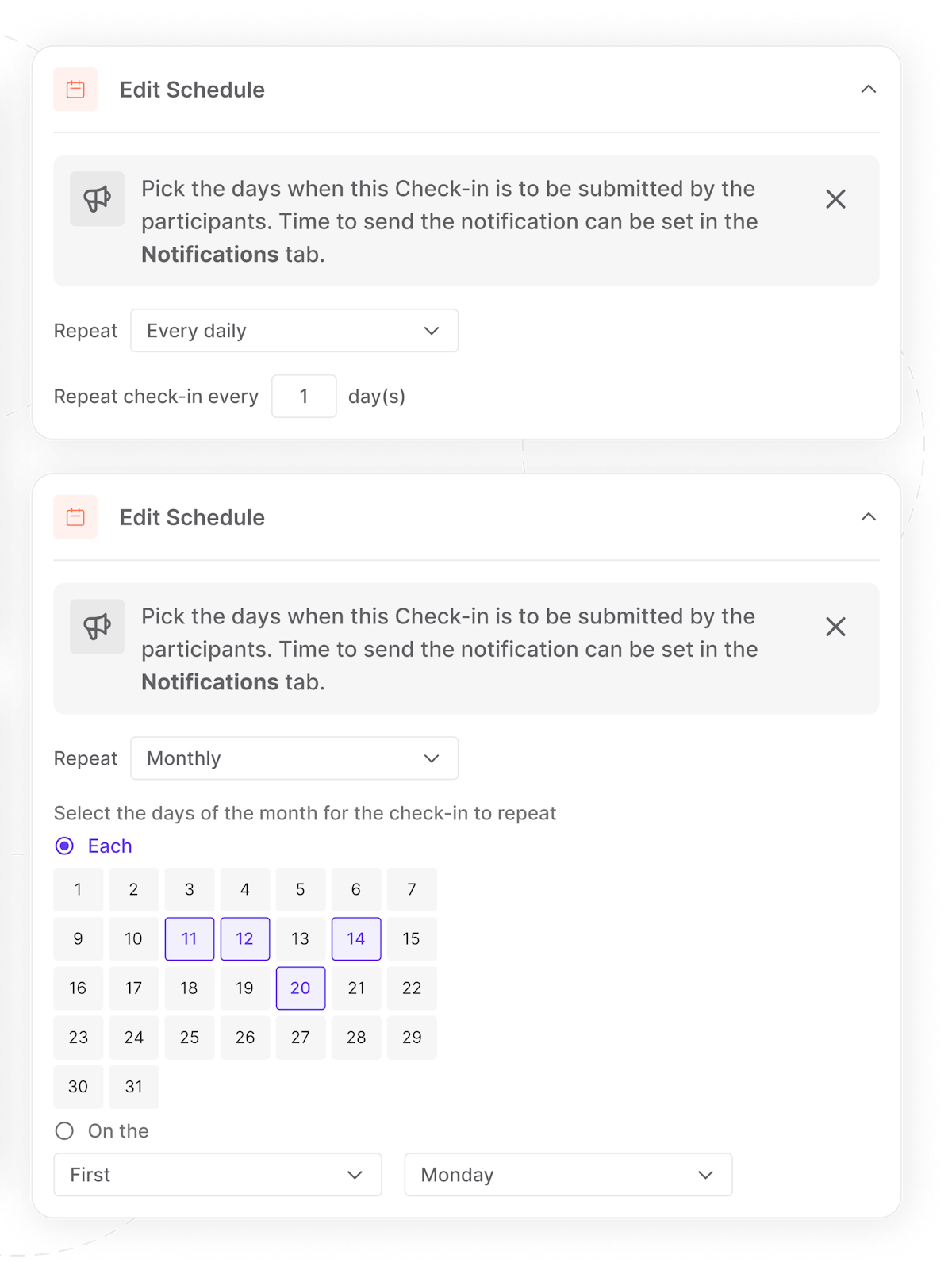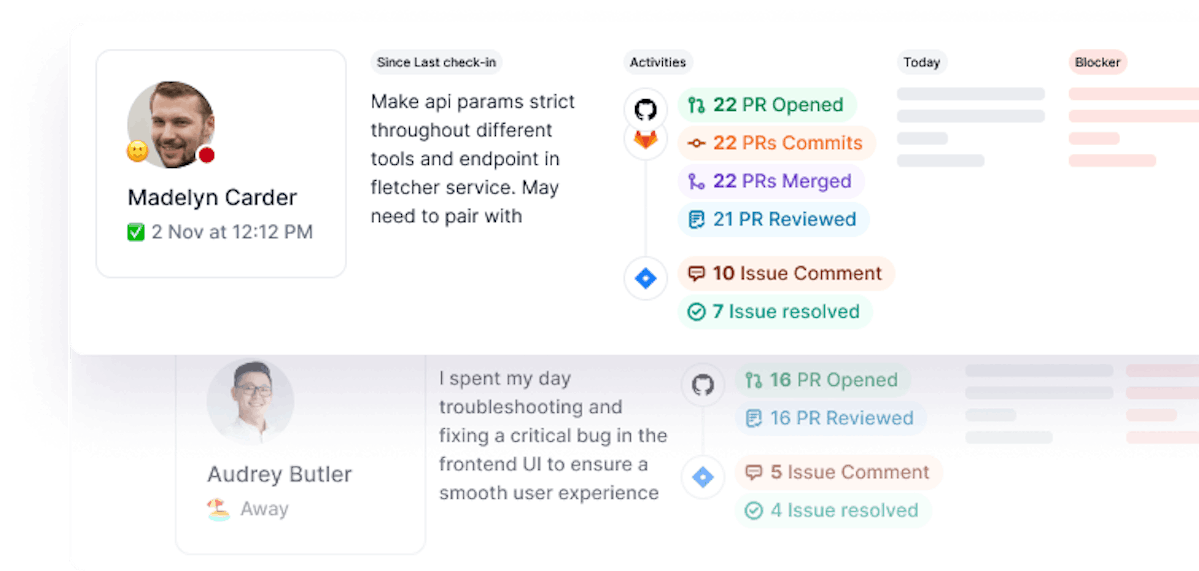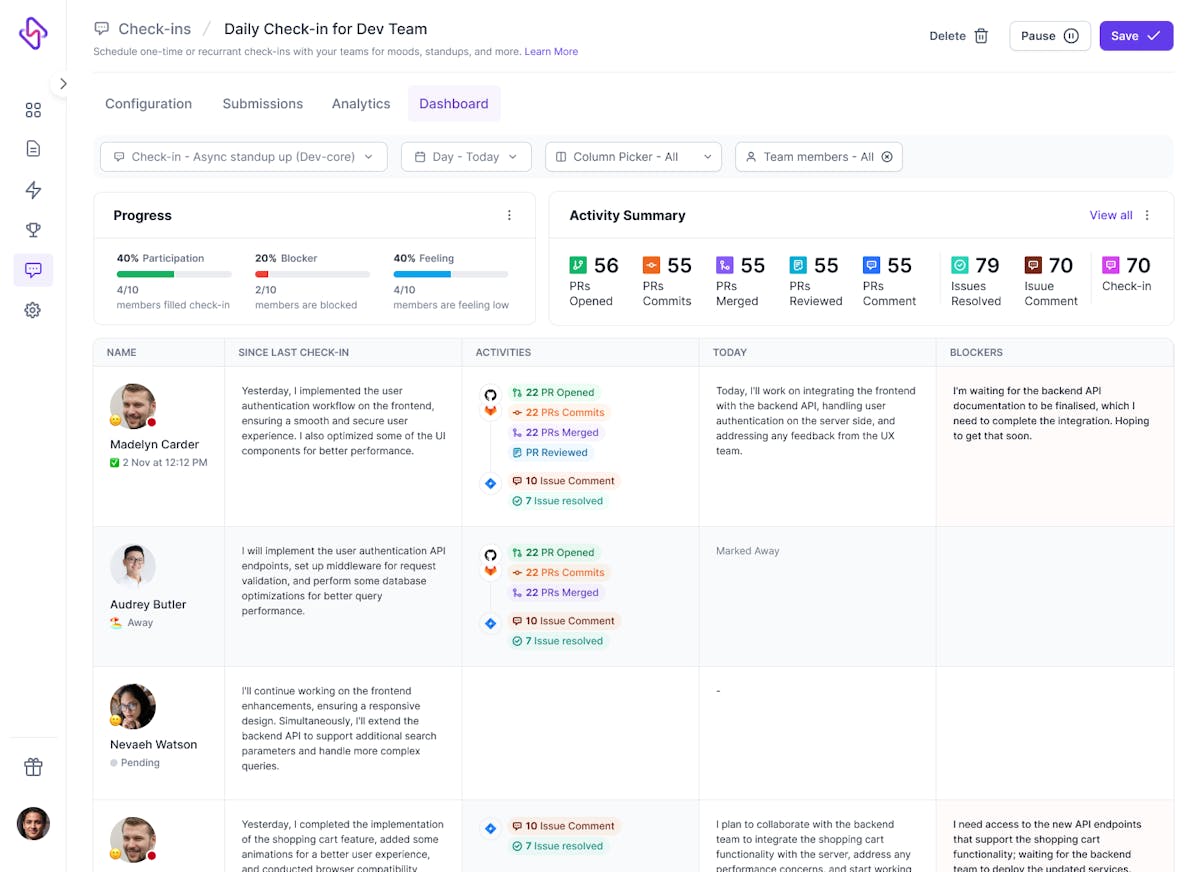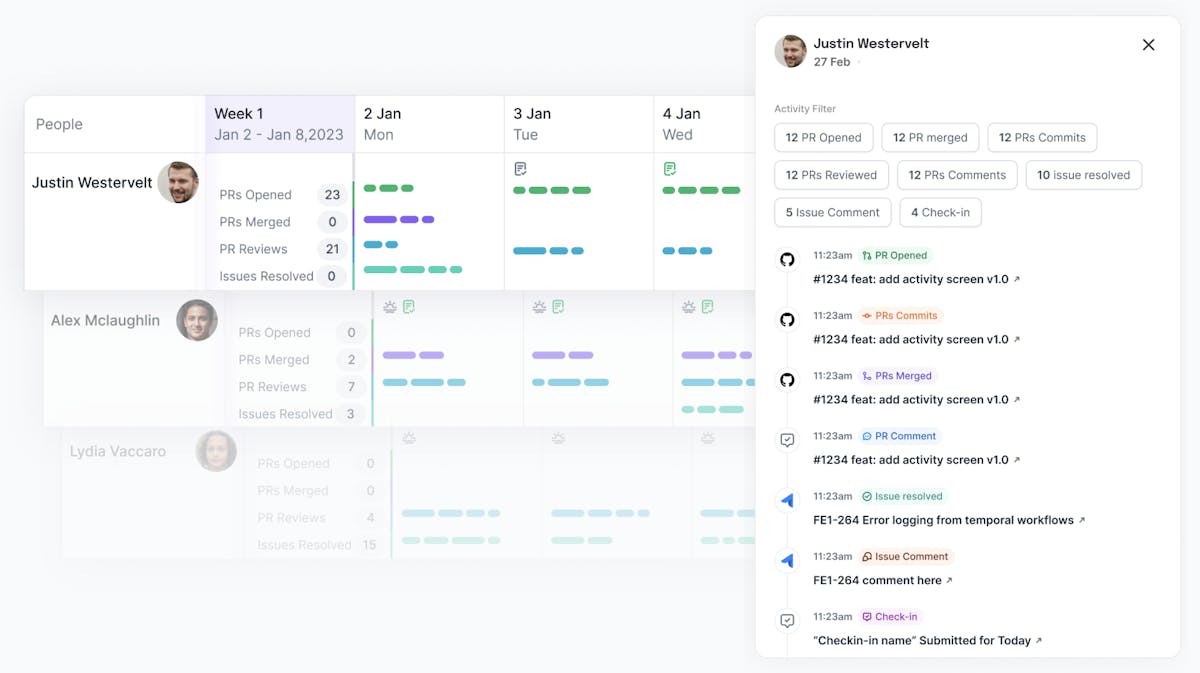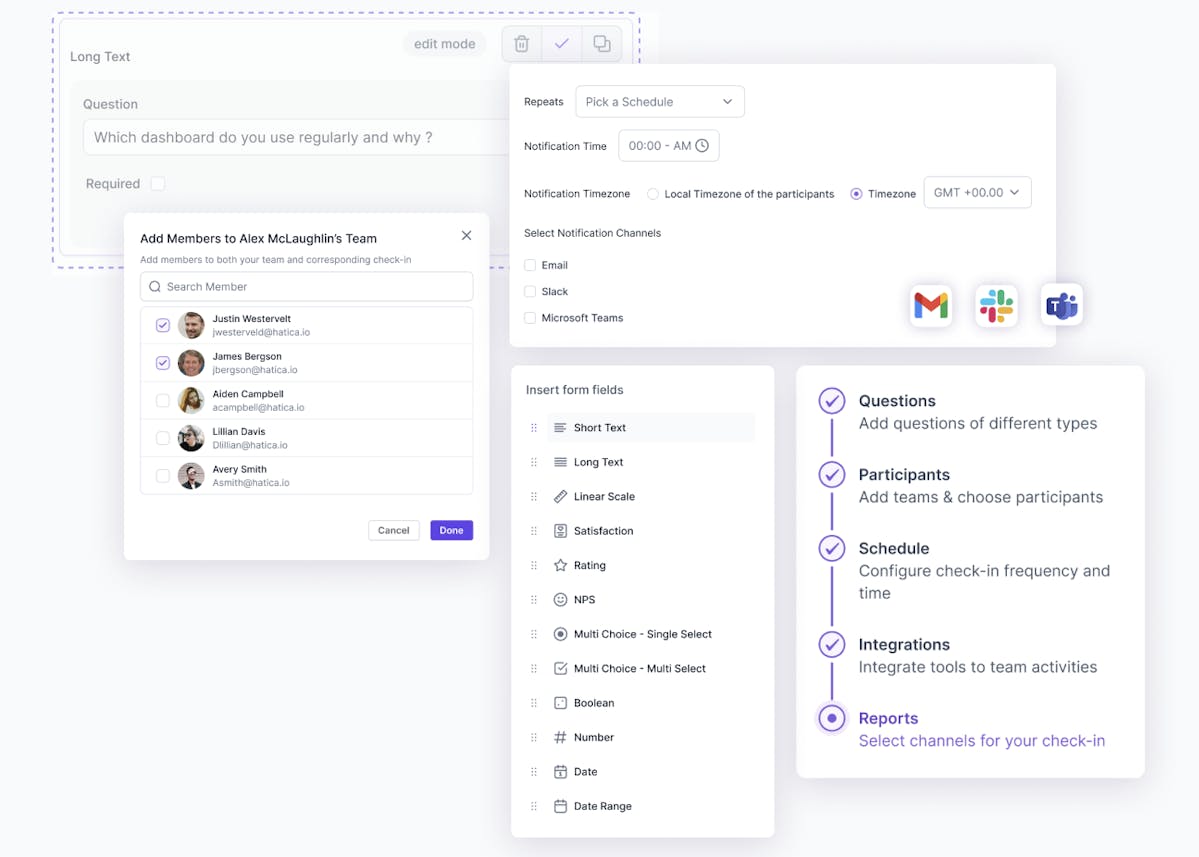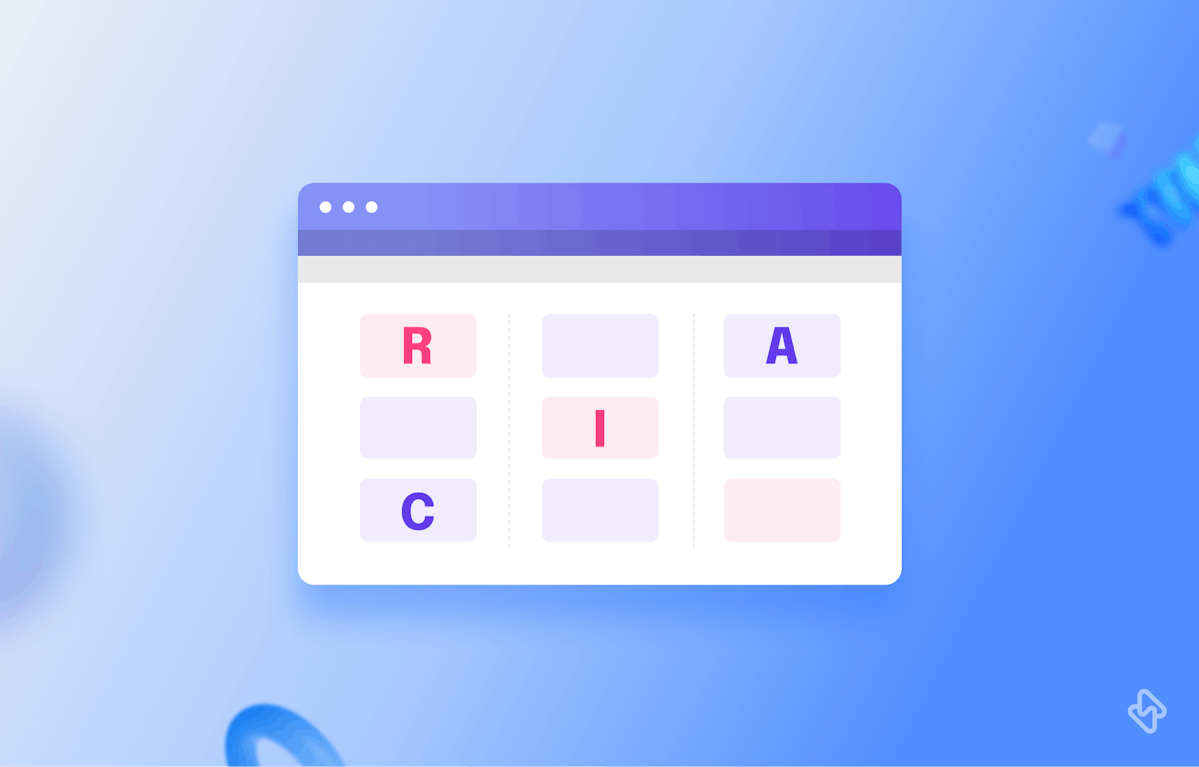At Hatica, we have been working with over 600+ engineering teams to help them improve their efficiency in delivering products. We provide engineering leaders with analytics and data that help them identify gaps in their development process and continuously improve it sprint after sprint. However, there is still one important piece of the puzzle that needs to be addressed to help teams improve things iteratively, especially in an agile environment: daily stand-up meetings.
"The best way to begin implementing Scrum is to establish daily Scrum status meetings" (Schwaber, 2003)
While these meetings were originally designed to be synchronous, the growing trend of remote and hybrid work environments has made synchronous stand-ups increasingly irrelevant. We have a solution that addresses this and closes the loop on the end-to-end developer experience and productivity for your engineering team, provided by Hatica.
But before we dive in, let's address the fundamentals:
What Are Daily Standup Meetings?
Daily scrums or standup meetings are concise, nevertheless, informative meeting, held synchronously during a sprint either in person or over a call, where all the team members answer these three key questions:
- What have you accomplished since the last meeting?
- What is your plan for today?
- What are your blockers, if any?
Why Daily Standups Are Important For Agile Teams?
Standups are the glue that binds an agile team. Regular communication builds trust, strengthens relationships, and reduces team friction. For you, as an engineering manager, standups are the tried and tested way to foster a sense of camaraderie in an otherwise introverted, and chaotic development team.
“The Daily Scrum meeting gets people used to team-based, rapid, intense, co-operative, courteous development. Daily Scrums improve communication, eliminate other meetings, identify and remove impediments to development, highlight and promote quick decision-making, and improve everyone’s level of project knowledge.”
Moreover, these daily standups help break information silos across engineering, and product owners. Each team member shares their progress, roadblocks, and next steps, keeping everyone in the loop and building a sense of shared ownership.
They also contribute to building an understanding of the product among all team members– a prerequisite to successful and quick software delivery.
However engineering teams have evolved drastically in the way we work, communicate, and deliver. Unfortunately, scrum meetings have failed to do so. In fact with growing and scaling teams, they continue to defeat the purpose.
Challenges of Synchronous Standup Meetings
Standups are great! We’ve already talked about what they bring to the table. But, why are we so against them being synchronous? Let’s talk about it.
1. Lack of Recorded Decisions
Synchronous standups mostly lack built-in note-taking, meaning decisions and action items discussed during the standup are often forgotten or lost without proper documentation. This leaves you with duplicate work, missed deadlines, and a whole lot of "wait, what did we decide? And who said what?" moments.
2. Information lost in Translation
Synchronous standups heavily depend on verbal communication making it challenging to accurately capture and retain information. It is common for important details and decisions to be forgotten or misunderstood.
3. Lack of Flexibility
Synchronous standups can be a nightmare for globally distributed remote teams. They demand everyone to show up at the same time, no matter their time zone or schedule. Expecting everyone to waltz to the same time zone's tune can stifle the flow state of devs, cut down their deep work hours, and even harm their work-life balance.
4. Information Overload
Picture this: your IC is knee-deep with some critical code review when your standup teammate starts detailing a product release that’s months away. It's great, but for your ICs as of now, it's just noise.
In diverse teams with specialized roles, synchronous standups often suffer from information overload, leaving everyone feeling distracted, and as if they are wasting their time that might have been used in writing code or grooming themselves.
5. Deviation from the Agenda
Remember how many of those 15-min quick catchups turned into 1-hour long discussions? Spontaneous discussions, while valuable at times, can hijack the agenda and exceed the allotted time of standups.
Imagine 75% of your daily standup time focused on one challenge that doesn’t even concern the whole team. A Stray study found just that, even exposing how teams bogged down in tangents, hindering their ability to address key priorities and collaborate effectively.
Despite all the challenges that synchronous standups come with, many teams continue to find some value, and as a way to stay connected.
While synchronous standups offer some value for connection and team spirit, especially in distributed settings, their limitations often outweigh the benefits. The daily grind of standups can overshadow deeper, more meaningful interactions, and the focus on progress updates can leave little room for genuine team bonding.
Instead of relying on standups for culture building, consider dedicated team-building activities or asynchronous initiatives. These could involve virtual coffee chats, shared interests groups, or even online games. By separating the goals of communication and culture, you can ensure both receive the dedicated attention they deserve.
Rethinking the Daily Huddle: A Look at Asynchronous Standups For Modern Engineering Teams
Imagine a stand-up meeting where everyone can contribute their updates at their convenience, regardless of location or schedule.
Asynchronous standups offer exactly that. Instead of a single live meeting, team members submit brief updates asynchronously, usually through a dedicated platform.
What Are the Benefits of Async Standups For Engineering Teams?
Engineering teams globally are transitioning to asynchronous standups for:
1. Automated Documentation
Async standups are a defined place for public knowledge transfer of all critical things engineering. Async updates are concise reports without redundant details and ensures everyone gets the information they need, when they need it. This transparency keeps everyone informed, promotes accountability, and prevents duplicate work.
2. Flexibility and Responsiveness
With async standups, your team can have a sense of continuous progress, and shared responsibility. No more early morning meetings or late-night Zooms. Async standups transcend geographical barriers, so your team can contribute anytime, anywhere.
This inclusivity empowers every direct report to have their voice heard, and status updated, regardless of location. Also, it means no more working out of office hours just to update managers with the work you have done/will do tomorrow.
3. Reserved Time For Deep Work
Async standups are a boon for your ICs constantly suffering with context switching. Synchronous standups can waste your ICs focus and time at the wrong place. Did we also mention a dev takes 25 minutes to attain their focus state after every meeting/ Slack ping they receive, and attend?
Async standups let you carve out uninterrupted hours for that laser-focused deep work your ICs crave.
4. Tailored Information
Async standups help you leave the broadcast mentality that might be overloading your team with information they don’t need, and didn’t want in the first place.
With asynchronous standups, updates are targeted to specific team members or projects, ensuring relevant information reaches the right eyes while reducing distractions for others.
5. Minimizing Unproductive Discussions
By following a structured format and focusing on key updates, asynchronous standups minimize the potential for lengthy and unproductive discussions that can often derail live meetings. This allows teams to stay on track and make the most of their time.
Now that we know “the whys” behind async standups, let’s see how to run them to power up your team’s workflow:
How to Avoid Challenges in Asynchronous StandUps?
Switching to asynchronous stand-ups can be a game-changer, eliminating scheduling conflicts and the pressure of rushed updates. But even great ideas can have a bumpy landing.
Let's break down these potential challenges and ensure your asynchronous stand-ups are a success!
1. Foster Clear Communication
Define what information needs to be shared (completed tasks, upcoming work, roadblocks) and set deadlines (daily, weekly?) Communicate these expectations clearly and consistently to the team. Establish a regular update schedule, whether daily or weekly, and stick to it. Consistency helps team members plan their work around stand-up updates.
2. Standardize Updates for Clarity
Structure Updates: Encourage a consistent format for updates, such as "Completed Tasks," "Upcoming Work," and "Roadblocks." This structure improves readability and ensures everyone receives the necessary information.
3. Respect Time Zones
For geographically dispersed teams, set deadlines that accommodate everyone's working hours. Unrealistic deadlines create unnecessary stress and hinder productivity.
5. Encourage Interaction
While asynchronous, interaction is crucial! Foster a culture of commenting, asking questions, and offering help on updates. This maintains team spirit and facilitates prompt issue resolution.
6. Continuous Improvement
Regularly solicit feedback from your team on the asynchronous stand-up process. Utilize this input to refine your approach and maximize its effectiveness. As the teams evolve or projects change, be open to refining your asynchronous stand-up approach.
7. Leverage Effective Tools
Just like having the right wrench makes fixing a leaky faucet easier, using the right tools can streamline your asynchronous stand-ups. Popular options include:
Chat Platforms: Slack and Microsoft Teams allow for easy update sharing, commenting, and keeping everyone in the loop.
Project Management Software: Tools like Asana, Trello, or ClickUp can help visualize progress and track tasks alongside updates.
For engineering teams, especially those with members across time zones, platforms like Hatica can be a game-changer. These tools can integrate with your existing workflow and provide additional insights into developer activity and potential roadblocks.
We break this down below!
Run Async Standups With Hatica Check-ins
Hatica's Check-in feature is your team's all-in-one async operations hub. With data-driven visibility into your engineering, uncover hidden roadblocks that might be bogging down your devs, take a stock of your IC’s mood and pulse, record developer satisfaction, and as we said previously, close the loop on developer experience.
We help you ditch the one-size-fits-all approach and unlock a flexible, data-informed way to connect with your direct reports, anytime, anywhere:
Automated Progress Tracking
At Hatica, we understand that submitting standup responses can be tedious and dull. Therefore, we want you to focus only on the most important aspects: "What are you blocked on?" and "How are you feeling?" We take care of everything else for you.
These standups can be automated, and delivered to where your team works, and is located: Slack, or Microsoft teams, or in your Email. All you have to do is:
- Set the schedule to when you want your teams to check-in
- Exclude people who are on leave, and
- Send the stand-ups based on the local time of your team members when your teams are distributed across different time zones


